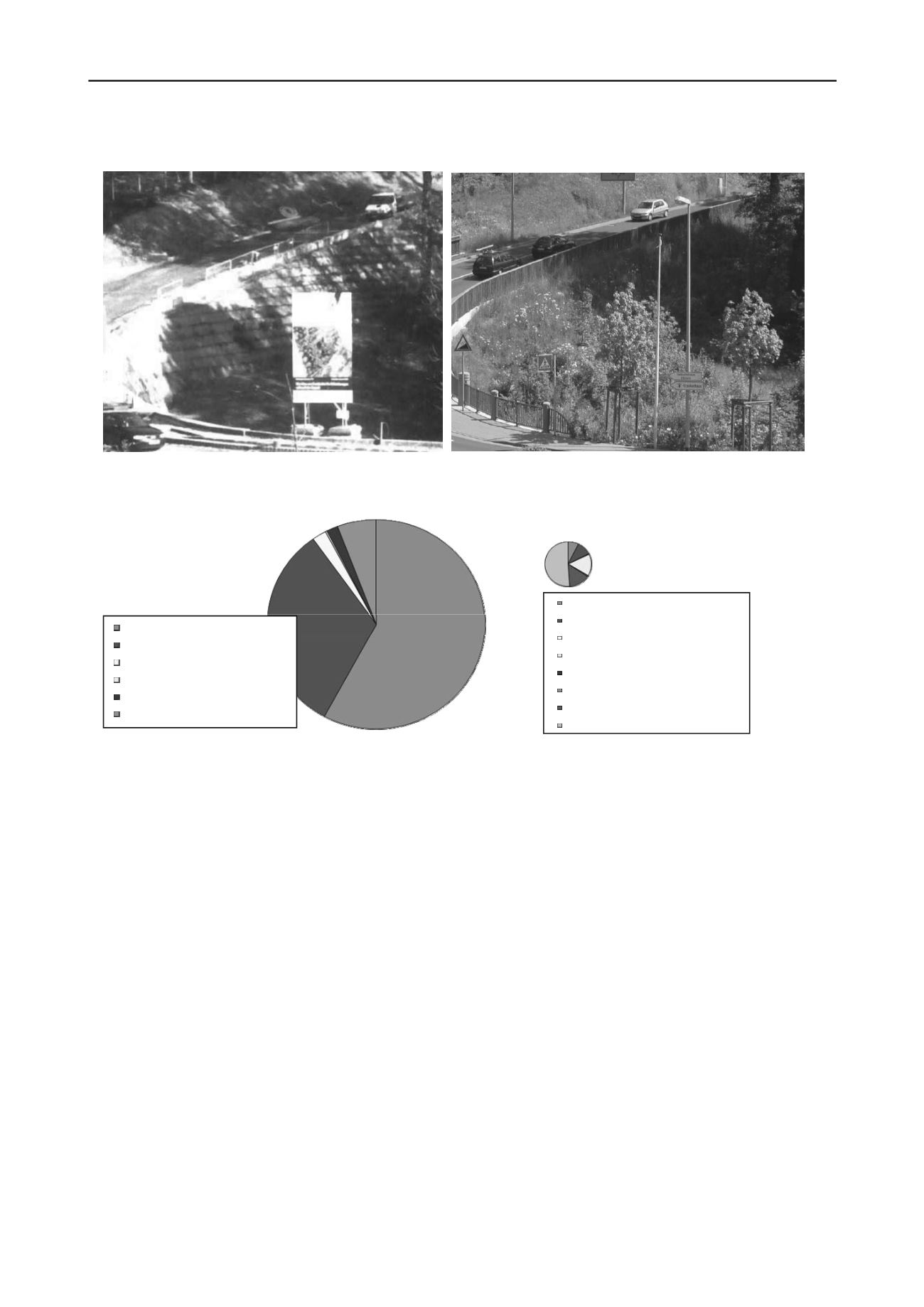
3212
Proceedings of the 18
th
International Conference on Soil Mechanics and Geotechnical Engineering, Paris 2013
national standards have to be reduced to additional regulations,
not being in any conflict to EC7. For Germany, the actual status
for the normative range of regulations is given in Fig. 3. The
Figure 1. Steep slope in Idstein, under construction 2001 (left) and in service 2004 (right)
Cantilever Wall
Geogrid-reinforced steep slope
CO
2
: 101 t
CO
2
: 542 t
Production Secugrid
Production Steel-Elements
Figure 2. Carbon footprint comparison, example Idstein; cantilever wall (left) and executed geogrid reinforced steep slope (right)
current national standard DIN 1054 will be used as
supplementary rule, but being reduced to fragments. The three
parts of the rules will be combined to a normative handbook
with blended text for practice aspects. DIN 1054:2010 refers to
recommendations published by the German Geotechnical
Society (DGGT).
The latest recommendation EBGEO dealing with
geosynthetics is directly linked to DIN 1054:2010 and therefore
also according to EC7; special hints are given how to use
EBGEO in the EC7 concept. This recommendation is available
as English translation (EBGEO, 2011). Substantial design
instructions which meet the requirements of numerous practical
applications are offered. These reflect the state-of-the-art
considering the proven scientific findings.
In Great Britain, the comparable recommendation is called
BS 8006. BS 8006 can also be read as a supplementary annex to
the European Regulation and also hints are given how to use it
in the EC7 context. So actually two finalized recommendations
dealing with the use of geosynthetics are available and allow for
design in accordance to EC7.
As it is well known, that EC7 allows for three different
design approaches DA1, DA2 and DA3, used in different
countries of the EU, it is of general interest whether the British
and German recommendations lead to comparable results. Fig. 4
gives an example for a typical steep slope reinforced by
geogrids. In both calculations the full set of partial factors as
given by EC7 added by specific partial factors for geosynthetics
as given by EBGEO and BS 8006 in addition to EC7 and the
supplementary national regulations are used (Klompmaker &
Werth, 2011).
It has to be stated here, that EC7 gives no full set of partial
factors for the usage of geosynthetics. Therefore the authors
strongly recommend the use of EBGEO in combination with
DA3 and BS 8006 in combination with DA1 as long as no
national regulations or recommendations exist in the other
countries of the EU. Disregarding additional partial factors as
given by EBGEO or BS 8006 can lead to significant excess of
the ultimate and serviceability limit state.
For EBGEO and BS 8006 it can be stated that the outcome
indicates that the codes are validated against practice, current
scientific experience and result in well comparable utilization
ratio.
3 LONG-TERM EXPERIENCE ON GEOSYNTHETICS
REINFORCED WALLS AND CONCLUSIONS FOR DESIGN
Reinforced soil as one of the eldest construction techniques
already used 1400ac in Iraq (Tower of Babylonia) has become
popular with the availability of high strength wovens and the
today's use of geogrids with perfect geosynthetic-soil-
interaction properties. Herold (2007) documented seven high
loaded structures that are under continuous supervision. The
documented strain within the geosynthetic reinforcement is
measured within the range of 0.05 % … 0.4 %. Various
measurements from literature (Pachomow et al., 2007) show
Installation
Concrete Beam
Brickwork
Transport
Soil and Installation
Transport Soil
Production Contrete B25
Production Steel ST500/550
Transport Concrete / Steel
Installation
Soil and Transport
Transport Soil


